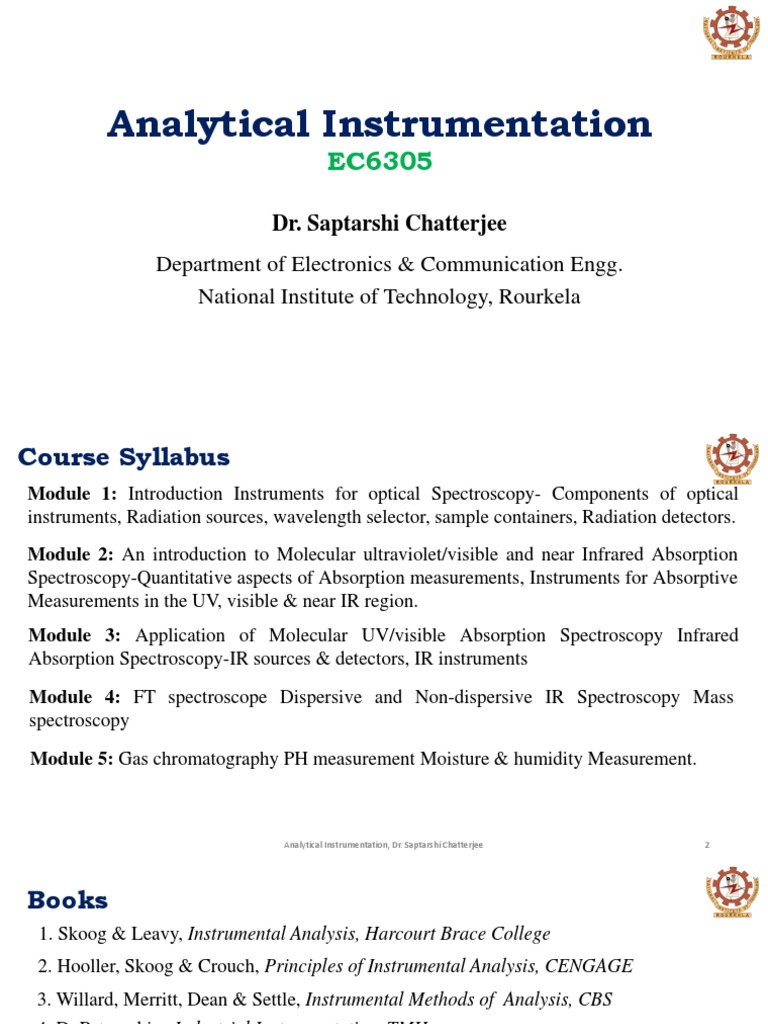Analytical instrumentation serves as the backbone of modern scientific inquiry, facilitating the measurement and analysis of physical and chemical properties of substances. From the microscopic examination of cells to detecting trace elements in environmental samples, analytical instrumentation provides the tools necessary for both qualitative and quantitative analyses across various disciplines. This discourse delves into the intricate world of analytical instrumentation, elaborating on its diverse types, methodologies, and the nuances that characterize each.
At the heart of analytical instrumentation lies a plethora of distinct classes, each designed to address specific analytical challenges. These can be broadly categorized into spectroscopy, chromatography, mass spectrometry, and electrochemical analysis. Although these classes often interplay, their fundamental principles and applications remain markedly different.
Spectroscopy encompasses techniques that leverage the interaction of electromagnetic radiation with matter to yield information about the structure and composition of a sample. This technique boasts various forms, including ultraviolet-visible (UV-Vis) spectroscopy, infrared (IR) spectroscopy, nuclear magnetic resonance (NMR) spectroscopy, and Raman spectroscopy. For instance, UV-Vis spectroscopy is instrumental in determining the concentration of analytes by employing Beer-Lambert law, which correlates absorbance to concentration. Conversely, IR spectroscopy elucidates molecular vibrations and functional groups, rendering it invaluable for organic compound analysis. NMR spectroscopy, on the other hand, reveals information about the nuclear environment within molecules, offering insight into molecular structure and dynamics.
Meanwhile, chromatography is a technological cornerstone for separating and analyzing components within complex mixtures. Various chromatographic techniques, such as gas chromatography (GC), liquid chromatography (LC), and high-performance liquid chromatography (HPLC), cater to a wide array of analytes. GC operates on the principle of vaporization and partitioning between a stationary phase and a mobile gas phase, excelling in the analysis of volatile organic compounds. HPLC, revered for its robustness and efficiency, employs high pressure to push solvents through a packed column, effectively separating non-volatile and polar compounds. These separation techniques not only enhance analytical precision but are also pivotal for sample purification in preparative applications.
Advancements in analytical instrumentation have been exponentially propelled by the integration of mass spectrometry (MS), a technique that provides unparalleled sensitivity and specificity. In mass spectrometry, ions are generated, analyzed, and detected based on their mass-to-charge ratios. Coupling MS with chromatographic techniques, such as GC-MS or LC-MS, enhances the capability to identify and quantify analytes in complex matrices with high accuracy. Applications span across pharmaceutical analysis, proteomics, and metabolomics, elucidating biomolecular interactions and metabolic pathways that are essential in contemporary research.
Additionally, electrochemical analysis exploits the interplay between electrical current or voltage and chemical reactions. Techniques such as potentiometry, voltammetry, and amperometry provide insights into the redox behavior of analytes. Potentiometric methods, for example, utilize ion-selective electrodes to measure the potential difference attributable to specific ionic species, thus enabling the determination of concentrations in various samples. The versatility and relatively low cost of electrochemical techniques make them highly desirable in environmental monitoring, food safety, and clinical diagnostics.
Transitioning from a description of the techniques to the implications of these methodologies, the impact of analytical instrumentation on scientific progress cannot be overstated. The provision of accurate data underpins research in myriad fields, from chemistry and biology to materials science and environmental studies. Researchers are continuously benefiting from enhanced analytical capabilities, paving the way for groundbreaking discoveries. The evolution of instrumentation, characterized by increased automation, miniaturization, and interconnectivity, is redefining the landscape of analytical assessments.
One salient trend is the advent of miniaturized instruments, which offer portability without compromising performance. Techniques such as microfluidics and lab-on-a-chip technologies epitomize this movement, providing rapid analysis and reduced sample volumes. These innovations are particularly transformative in point-of-care diagnostics and remote environmental monitoring, where rapid and reliable results are paramount.
Furthermore, the integration of data analytics with analytical instrumentation is an area of burgeoning interest. Sophisticated software algorithms and machine learning techniques are being employed to process and interpret vast datasets generated by these instruments. Such advancements enhance the ability to discern patterns, predict outcomes, and inform decision-making processes in research and industry.
Yet, despite the monumental advancements seen, some challenges persist. The complexity of analytical instrumentation necessitates a high level of expertise for operation and interpretation. Moreover, issues related to instrument calibration, method validation, and regulatory compliance persist as significant hurdles for researchers and industries alike. As analytical methodologies grow ever more intricate, a concerted focus on education and training becomes indispensable.
In summary, analytical instrumentation encompasses a myriad of techniques and methodologies that are paramount for the analysis of chemical and physical properties across different scientific domains. From spectroscopy and chromatography to mass spectrometry and electrochemical analysis, the breadth and depth of instrumentation ensure that researchers can obtain crucial insights into complex materials and systems. As technology continues to forge ahead, the potential for transformative discoveries remains ever-expanding, highlighting the critical role that analytical instrumentation plays in the advancement of science and technology.










